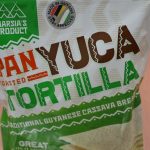Rice is a staple the world over. However it is more than that to the people of Guyana. From the earliest time, rice has been and continues to be one of the pillars of the Guyanese economy.
Rice cultivation has its beginnings in the 17th century and was introduced to Guyana during the period of African enslavement in the period of Dutch Colonialism.
Rice cultivation continued in Guyana and became a major economic venture for the descendants of Indians brought to the “New World” as indentured labourers. Today production in Guyana is wholly privately owned with government taking the role of facilitator.
GOVERNMENT’S ROLE
Rice producers are currently facilitated by the government through the provision of services such as research in pest control and varieties, farmer education, market acquisition through government to government agreements and the provision of lands through lease agreements.

Currently, almost 80,000 hectares (about 20,000 acres) of lands are under rice cultivation, some of which are government lands that are leased to farmers.
In the Abary/Berbice area where adequate drainage and irrigation systems are maintained by the MMA/ADA, land is leased at approximately $2500 per acre per year compared to an average cost of $20,000 per acre per crop from private land owners in other rice producing areas.
The MMA/ADA is a semi-autonomous agency under the Ministry of Agriculture, governed by a Board of Directors. The Board is responsible for the formulation of policies for the efficient functioning and operations of the MMA/ADA.
Primary goals of the MMA/ADA are to manage, operate and maintain all drainage and irrigation works in Region No. 5, Mahaica/Berbice and to administer all State and Government lands for the benefit of farmers/residents and overall national development. Overall, the MMA/ADA supports nearly half of the national rice production.
PRODUCTION
The Guyana rice sector has seen consistent growth over the decades from a mere 80,000 tons in the 70’s to more than 600, 000 tons in 2015. A number of factors may be seen as contributing to the continued growth in rice production.
The increased acreage of land under rice cultivation may be attributed to investments in research to develop new high yielding varieties, contributing to the high yields farmers are enjoying, with direct benefit in unit cost of production and increased profitability. There has also been investment in education for farmers and other stakeholders in the rice sector.
| Region 2 | 19% |
| Region 3 | 18% |
| Regions 4 & 5 | 42% |
| Region 6 | 21% |
Rice production by region.
MARKET & EFFECT ON PRICE.

uyana is ranked number 37 on the Milled Rice Production by Country Index with 680, 000 metric tons compared to China, ranked number 1 with 145,770,000 metric tons annually.
This ranking means that Guyana does not have a major influence on the world market for rice and therefore is obligated to trade at trending prices
Rice export in 2014 was at 501,208 tonnes while in 2015 exports stood at 510,807 tonnes, an increase of 9,599 tonnes. Despite the increase in rice exports, Guyana earned less. US$211.8M in 2015 compared to US$249.5M from rice exports in 2014. Rice being harvested with combine
The top seven main countries for the export of Guyana’s rice in 2014 were: Venezuela with 37.5% of total exports, followed by Panama with 11.83%, Jamaica with 10.03%, Portugal with 8.28%, Nicaragua with 7.02%, Holland with 5.08% and Trinidad and Tobago with 4.85%. The majority of Guyana’s rice was exported to Venezuela up until 2015 under the Petro Caribe Oil for Rice agreement between Venezuela and Caricom member countries.
While there are calls now for Guyana to try to regain the Venezuela market, there are three things that must be noted.
First, that the drop in oil prices from the time when the Petro-Caribe Agreement was inked could make the Venezuela market less attractive.
Secondly, the present government was in the opposition when Venezuela indicated that it would not be taking rice from Guyana. The then government did nothing to retain the Venezuela market neither did they inform the nation of what was happening and prepare farmers and millers.
Thirdly, the Venezuela market was about 35-40 per cent of Guyana rice exports. The Portugal market is now about 30 per cent.
| Country | Percentage Purchased |
| Venezuela | 37.5 |
| Panama | 11.83 |
| Jamaica | 10.03 |
| Portugal | 8.28 |
| Nicaragua | 7.02 |
| Holland | 5.08 |
| Trinidad and Tobago | 4.85 |
RESPONSE TO CHANGES IN MARKET AND PRICES FOR RICE
To help chart the course for the sustainability of rice and ensure the survival and continued growth of the rice sector, a number of initiatives have been undertaken by the present government through the Ministry of Agriculture and other departments of the state. Among the interventions taken by the government are
- The release of $800M to pay rice farmers when Venezuela reneged on the Guyana/ Venezuela Oil for Rice agreement.
- Requesting the preparation of a new schedule for rice farmers’ payments to the Guyana Lands and Surveys Department (GLSC).
- The search for new markets for Guyana’s rice. Guyana now exports rice to 40 countries and is expected to double its export to Jamaica, at prices higher than the world market price. At the time of signing the agreement for supplying rice to Jamaica rice was being sold on the world market at prices ranging from US$345 to $370 per ton. Jamaica agreed to pay US.$400 per ton.
- The recent release of the first successful line of aromatic rice which has created a possibility for improved earnings for local farmers planting this variety. The International price for a tonne of this specialty rice is between US$700 and $1200 per tonne. Many mills are in the process of adjusting their infrastructure to take advantage of the opportunities which will arise from the production of this new variety.
- GRDB utilizing budgetary allocations to upgrade facilities at the Burma Research and Development facility. The agency has recently invited bids for the installation of a seed paddy storage bond, storage bin and seed cleaning equipment at the facility.
- Fixing of existing pumps and installing new ones in several rice producing areas to ensure proper drainage and irrigation and to reduce the possibility of crop loss from drought or flooding.
Rice will continue to be a pillar of the local economy. Back in July last year, President Granger at a National Conference of Rice farmers and millers had expressed confidence in the future of rice.





